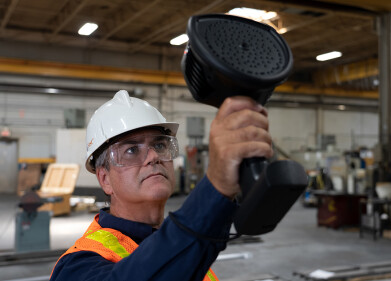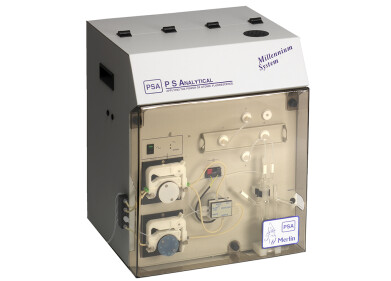Environmental laboratory
Pre-Historic Australian Cave Art Under Threat from New Petrochemical Site
May 24 2023
The Murujuga rock art, a world-renowned archaeological site located on a peninsula extending from Australia’s northwestern coast, is currently under threat. Home to the largest and oldest collection of petroglyphs globally, spanning roughly 40,000 years, this location is now facing unprecedented risks from nearby petrochemical activities. Scientists, alongside First Nations custodians, have raised alarm about the corrosive emissions from a neighboring petrochemical complex that is gradually eroding these prehistoric imprints.
This issue is set to escalate as construction for a new fertilizer plant has begun, with a natural gas processing facility also in the pipeline. The Conservation Council of Western Australia has raised concerns that this proposed expansion could lead to Australia's most polluting project, making it challenging for the country to uphold its commitment to greenhouse gas emissions reduction.
The intricate rock art, crafted by Aboriginal artists over millennia by etching into the mineralized patina of rocks, is more than just an archaeological treasure. This collection, comprising over a million images, reveals a rich narrative of traditional land use, ecological changes, and cultural practices extending back thousands of years. Depictions of marine and terrestrial fauna, human faces, and complex geometric designs offer invaluable insights into the past. However, with the threat posed by corrosive emissions, Benjamin Smith, a rock art specialist from the University of Western Australia, fears that the art's degradation will become evident within our lifetime.
The spiritual importance of the rock art sites to First Nations peoples is likened to the significance of cathedrals to Christians. Given the absence of a written language among Australia's First Peoples, the rock art serves as a significant cultural and historical record. Josie Alec, a traditional custodian of the Kuruma and Mardudhunera peoples, refers to Murujuga as their "parliament," emphasizing its importance to their governance, politics, laws, and protocols.
When the search for a cargo port location began in the 1960s, the Murujuga rock art's significance was not yet fully appreciated, and consultation with local First Nations peoples was overlooked. Subsequent development led to the construction of the port, a large sea salt evaporation operation, and gas processing facilities, culminating in the establishment of Australia's largest petrochemical complex on the peninsula.
Although over 40% of the peninsula was incorporated into the Murujuga National Park in 2013, offering some protection to the rock art, it has not shielded them from air pollution. Smith and his colleagues have demonstrated that nitrogen oxides from the natural gas plants are deposited on rock surfaces, forming corrosive acids that degrade the patina.
Despite the formation of advocacy groups like Save Our Songlines, which demands a halt to the new fertilizer and natural gas projects, government officials have so far only committed to reviewing the potential impact of emissions under the Aboriginal and Torres Strait Islander Heritage Protection Act.
In response to the concerns raised, Woodside Energy, the company behind the existing and proposed natural gas plants, has argued that their emissions do not pose a threat to the rock art. However, a recent study comparing past and current photographs of the petroglyphs found significant damage, particularly to those closest to the petrochemical complex.
Smith argues for urgent action, urging the industry to implement emissions scrubbers and the government to reconsider the location of new industries. The stakes are high, as he notes, “You can’t remake this rock. Once it’s gone, it’s gone forever.”
Digital Edition
AET 28.4 Oct/Nov 2024
November 2024
Gas Detection - Go from lagging to leading: why investment in gas detection makes sense Air Monitoring - Swirl and vortex meters will aid green hydrogen production - Beyond the Stack: Emi...
View all digital editions
Events
Jan 20 2025 San Diego, CA, USA
Carrefour des Gestions Locales de L'eau
Jan 22 2025 Rennes, France
Safety, Health & Wellbeing LIVE
Jan 22 2025 Manchester, UK
Jan 25 2025 San Diego, CA, USA
Jan 29 2025 Tokyo, Japan



















